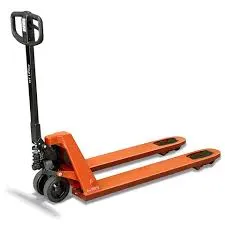


The Importance of Fall Arrest Systems in Workplace Safety
In various industries, particularly construction, maintenance, and any work conducted at heights, ensuring the safety of workers is paramount. One of the critical measures to protect employees from fall-related injuries is the implementation of fall arrest systems. These systems are designed to prevent workers from falling or to minimize the harm associated with a fall, thereby saving lives and reducing the risk of severe injuries.
Fall arrest systems typically consist of a combination of safety harnesses, anchorage points, and lanyards or lifelines. The primary purpose of these components is to ensure that if a worker slips or loses their balance while working at heights, they are safely secured and prevented from falling to the ground. This becomes particularly important in environments where workers are often exposed to dangerous heights, such as scaffolding, rooftops, or aerial lifts.
Types of Fall Arrest Systems
There are several types of fall arrest systems, each designed for specific applications and environments
. The most common are1. Full Body Harnesses These are the most widely used pieces of personal protective equipment (PPE) in fall protection. A full body harness distributes the force of a fall across the body, reducing the likelihood of injury. It is essential that harnesses are properly fitted and regularly inspected for wear and tear.
2. Lanyards and Lifelines These are connecting devices that link the harness to an anchorage point. Lanyards are typically made of nylon or other strong materials and can either be shock-absorbing or non-shock absorbing. Lifelines, on the other hand, are fixed or retractable systems that allow for continuous fall protection as the worker moves.

3. Anchor Points These are secure points to which lanyards or lifelines are attached. The strength and reliability of anchor points are crucial, as they must withstand the forces created during a fall. Installation of anchor points must adhere to strict industry standards to ensure safety.
4. Rescue Systems In situations where a fall has occurred, efficient rescue systems are vital. These may include pulley systems or specific rescue harnesses designed to retrieve a fallen worker quickly and safely.
Regulations and Training
In many countries, occupational safety regulations mandate the use of fall arrest systems in relevant work environments. Employers are required to provide fall protection training to employees. This training typically covers how to use fall arrest equipment correctly, the importance of regular inspections, and understanding the potential hazards associated with working at heights.
Moreover, employers must conduct thorough risk assessments to determine when and where fall protection is necessary. This proactive approach ensures that safety measures are in place before work begins, ultimately creating a safer work environment for all employees.
Conclusion
The implementation of fall arrest systems is not merely a regulatory requirement; it is a fundamental aspect of workplace safety that can prevent severe injuries and save lives. By effectively utilizing appropriate fall protection equipment, providing comprehensive training, and fostering a culture of safety, employers can significantly reduce the risks associated with working at heights. Investing in these systems demonstrates a commitment to worker safety, enhancing morale and productivity in the workplace. Ultimately, fall arrest systems are a crucial element of a comprehensive safety strategy, ensuring that workers return home safely at the end of each day.



